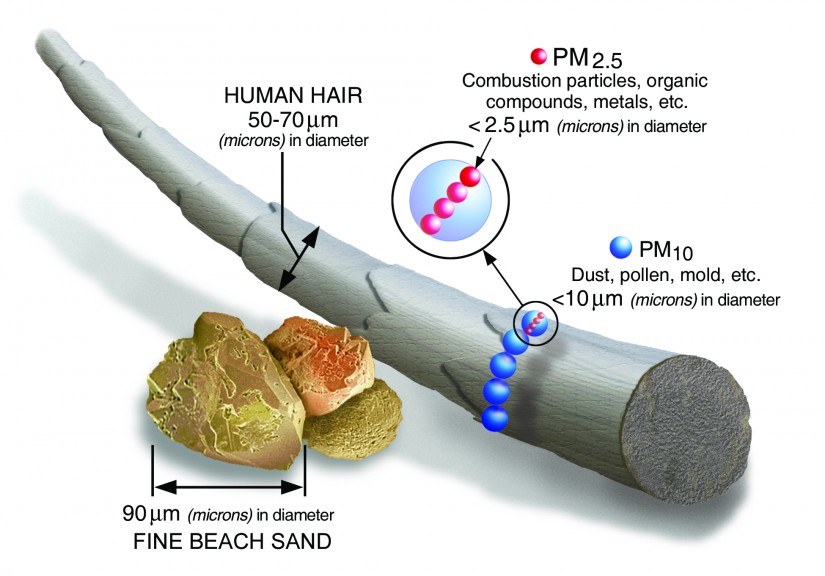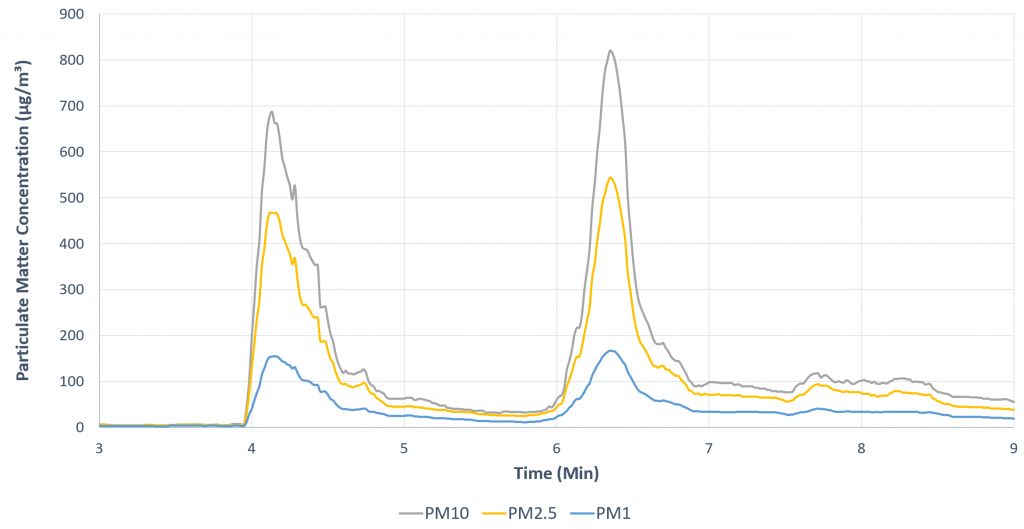First, what is particulate matter (PM)? Particulate matter is a mixture of solids and/or liquids suspended within the air. These solids and liquids are too small for the eye to see, however, if they're in a high enough concentration it will often look like a haze in the air. The particles that make it up can be anything from pollen and dust to even molecules of water. The number at the end (ex. the 10 in PM10) is the upper limit of the particles’ diameter. A size comparison produced by the US EPA can be seen below.

Why is Particulate Matter Dangerous?
So, if particulate matter is made up of simple things like pollen and dust, why is it dangerous? The identity of the particles actually is not considered when determining the health effects of particulate matter. Instead, the diameter of the particles is the only factor. The reason PM is considered dangerous to human health is its simple ability to get past the body's physical defenses. PM10 is able to reach the lungs and PM2.5 can even enter the bloodstream. In extreme conditions, such as the industrial smog found in China there have been clear relationships between particulate matter levels of both PM10 and PM2.5 and mortality and morbidity rates.
Guidelines for Particulate Matter
This may make you wonder why particulate matter is not a more common discussion. The reason for this, is that particulate matter is naturally found everywhere, even in untouched natural areas, from such things as soil and pollen that becomes airborne. Most cities within the developed world are within safe limits for particulate matter concentration or only enter dangerous levels when winds are low enough to let particulate matter collect. In the developing world, this is a serious problem due to high industrial development without strong environmental and pollution laws. For this reason, the World Health Organization (WHO) produced a set of safe annual and daily mean values for PM10 and PM2.5. However, in many Chinese cities, the daily mean particulate matter measurement is up to ten times higher than the WHO guideline. To help communities to reach these levels, there are also interim targets to give a series of more and more ambitious goals. All of the WHO values are daily and annual means, so short term exposure to hight particulate matter is considered safe and the very existence of a guideline amount means that there is a safe and natural level of particulate matter. However, PM is a simple physical parameter which only considers the diameter of the particles and not what they are made of. This means that even a low particulate matter level can be dangerous if the health effects come from chemical or physical properties other than size.
What is your Exposure?
This is one of many places where PocketLab Air can be extremely powerful as with it you can record your personal exposure to PM throughout the entire day. While most places are well below the WHO guidelines, your personal exposure may not. This is because you locally may be near many particulate matter sources or even just one very intense one. Once you have a days worth of data, simply average the values using Google Sheets or Microsoft Excel and you'll have your personal daily mean PM values for both PM10 and PM2.5.
Some Experiment Ideas
Some simple experiments to look at common sources of PM using the PocketLab Air include:
Inside vs. Outside
Ensure when you are walking between outside and inside to pause in the doorways long enough to get a couple of data points.
Fossil Fuel Burning
Try collecting data near heavy industry or near the road; especially where lots of vehicles idle
Erosion
Areas with loose soil will in the wind lead to higher particulate matter levels. An easy area to try is near construction sites or a plowed field.
Dust
Try to find a dusty area where you can disturb the dust such as carpets, dusty surfaces, or some unused books like the data below

Aerosol Sprays
Try spraying an aerosol such as bug spray or sunscreen near the sensor and see how high you can get it to peak. The data below is from photographer atmosphere aerosol. Ensure you do not spray on your PL Air directly. For more consistent results do this within a space with no wind and place the sensor below the area you plan to spray as it will often settle quickly.

Health Effects of Short-term Exposure
While some of these events cause extreme increases in PM, they are usually for short periods such as spraying an aerosol can or walking through a dusty library, meaning that the daily and annual mean values will still likely be below the WHO guidelines. There is limited literature on short term PM exposure and therefore its health effects are relatively unknown.


